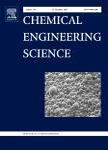版权所有:内蒙古大学图书馆 技术提供:维普资讯• 智图
内蒙古自治区呼和浩特市赛罕区大学西街235号 邮编: 010021

作者机构:Natl Tech Univ Athens Sch Chem Engn Athens 15780 Greece
出 版 物:《CHEMICAL ENGINEERING SCIENCE》 (化学工程科学)
年 卷 期:2014年第108卷第0期
页 面:203-212页
核心收录:
学科分类:0817[工学-化学工程与技术] 08[工学]
主 题:Drug delivery Posterior eye Computational modeling Age related macular degeneration Intravitreal injection Transcleral delivery
摘 要:Simulations of delivery of IgG1 Fab, an anti vascular epithelial growth factor (VEGF) macromolecular drug for the treatment of age related macular degeneration (AMD), from an episcleral thermally responsive-poly(N-isopolyacrylamide) (NIPAM)-gel implant, arc made to evaluate the effectiveness of sustained delivery. The model of the human eye used in the above simulations is validated as far as its anatomical and physiological features by the agreement observed in comparing results of simulations of intravitreal fluorescein delivery with relevant experimental data. Simulations of IgG1 Fab delivery from an episcleral NIPAM-gel implant to the posterior eye, with the previously validated anatomically and physiologically correct model of the human eye, show that drug therapeutic levels in the posterior eye are sustained for 8 weeks similarly to those associated with intravitreal injection of IgG1 Fab. Thus, delivery of the macromolecular anti-VEGF drug IgG1 Fab from an episcleral NIPAM-gel implant seems to be a viable alternative to more invasive, risk-related delivery by intravitreal injection, as effective and sustainable as the latter. (C) 2014 Elsevier Ltd. All rights reserved